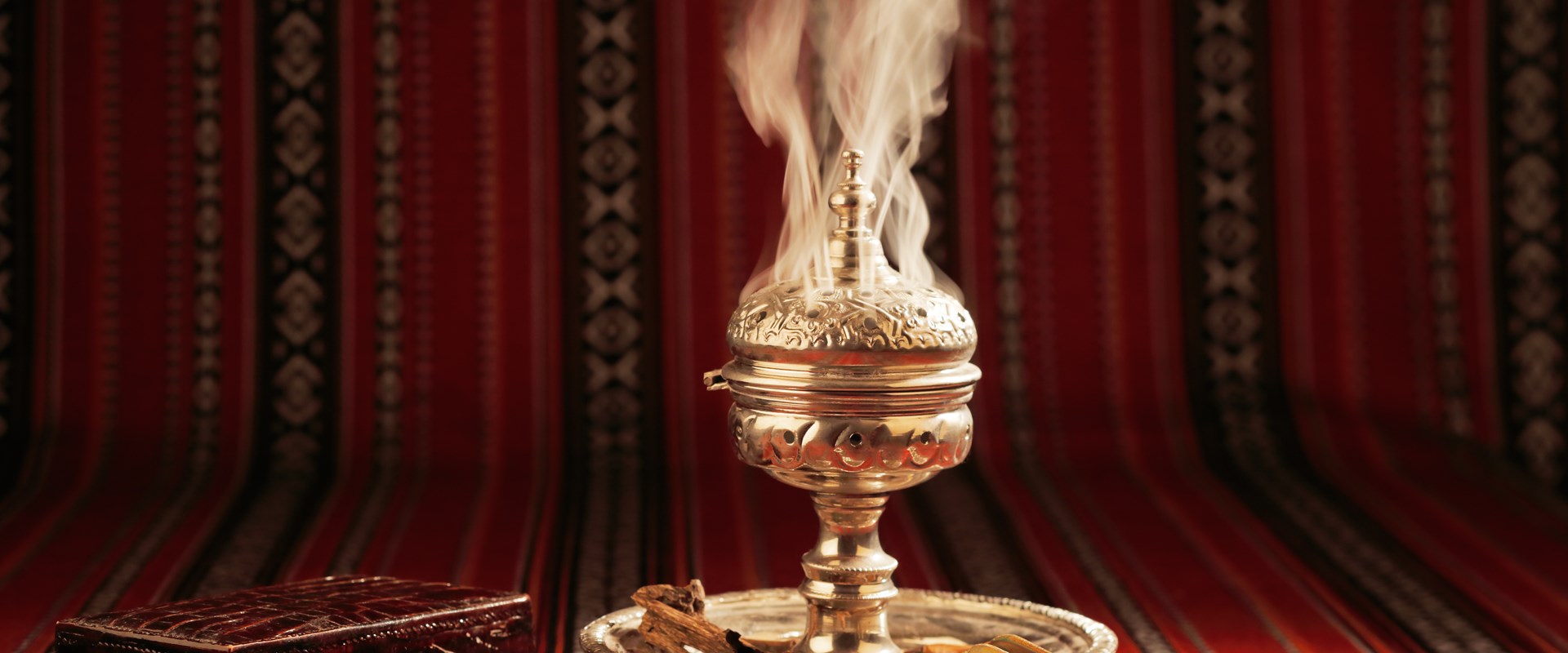
Ceremonial Burning Practices
Ceremonial burning practices
Burning incense/bakhoor
Burning incense is a popular way to add fragrance and promote a relaxing atmosphere in the home.

Bakhoor is traditionally used in religious and cultural ceremonies to purify the air and create a peaceful environment. The practice involves heating aromatic wood chips or coals soaked in fragrant oils to release a rich, pleasant aroma.

Follow our advice below to stay safe when burning incense/bakhoor in the home.
Choose the right environment
- Burn incense/bakhoor in a well-ventilated area, open windows or doors to prevent the build-up of smoke and carbon monoxide which is a health hazard. Have a working carbon monoxide detector in all rooms where incense/bakhoor is burning.
- Avoid burning incense/bakhoor near to curtains, clothes, paper and other flammable materials.
- Never burn incense/bakhoor where people are sleeping.
Use proper tools
- Always use a holder designed specifically for burning incense/bakhoor. Make sure the holder is made of a heat-resistant material, sturdy and can catch falling embers.
- Place the holder on a flat, heat-resistant surface, such as a ceramic tile or a metal plate to prevent the risk of fire.
Use incense/bakhoor with care
- Keep burning incense/bakhoor out of the reach of children and pets.
- Never leave burning incense/bakhoor unattended.
- It is safer to avoid moving incense/bakhoor around the home while it's burning. If you need to move burning incense/bakhoor around your home, keep it in its holder and grip it securely, taking care to keep it away from your face, clothing and flammable materials.
- Never burn incense/bakhoor if you feel sleepy or if you are under the influence of alcohol, drugs or medication. You are more likely to have a fire and less likely to be able to respond safely.
- Extinguish burning incense/bakhoor when you leave the room or when you go to sleep. Double check it is out properly and not still smouldering.
Burning sage/smudging
Burning sage or other herbs such as lavender and rosemary, also known as smudging, has been a sacred practice in many cultures for centuries. It is used for spiritual cleansing, removing negative energy or to promote a relaxing atmosphere.
Follow our advice below to stay safe when burning sage or other herbs in the home.
Choose the right environment
- Burn sage or other herbs in a well-ventilated area, open windows or doors to prevent the build-up of smoke which can be a health hazard. Have a working carbon monoxide detector in all rooms where sage or other herbs are burning.
- Avoid burning sage or other herbs near to curtains, clothes, paper and other flammable materials.
- Never burn herbs where people are sleeping.
Use proper tools
- Purchase high quality herb bundles from reputable sources.
- Always use a holder designed specifically for burning herbs. Make sure the holder is made of a heat-resistant material and can catch falling embers.
- Place the holder on a flat, heat-resistant surface, such as a ceramic tile or a metal plate to prevent the risk of fire.
Use herbs with care
- Keep burning sage or other herbs out of the reach of children and pets.
- Never leave burning sage or other herbs unattended.
- It is safer not to move sage or other herbs around the home whilst it is burning. If you do move the herb bundle to cleanse your home, keep it in the holder and grip it securely, taking care to keep it away from your face, clothing and flammable materials.
- Never burn sage or other herbs if you feel sleepy or under the influence of alcohol, drugs or medication. You are more likely to have a fire and less likely to be able to respond safely.
- Extinguish burning sage or other herbs when you leave the room or when you go to sleep. Double check it is out properly and not still smouldering.
Traditional burning
Some communities burn solid fuels such as wood or coals, in open containers such as clay pots to saturate the room with smoke. This is usually done for traditional, cultural, or medicinal reasons in the belief that it will cleanse the home.
- This can lead to dangerous levels of carbon monoxide and the risk of a fire starting.
- Carbon monoxide is an odourless, colourless gas that can cause illness or death.
- To prevent carbon monoxide poisoning and fire, never burn solid fuels such as wood or coals indoors unless you have a properly installed, well-ventilated appliance, such as a multi fuel burning stove.
- Visit our carbon monoxide webpage for more safety information.
Fit smoke alarms
- Have working smoke alarms on each level of your home and test them at least monthly.
- Consider an extra smoke alarm in all the rooms where you burn incense/bakhoor or herbs.
Remember
- If there’s a fire in your home, you should get out, stay out and call 999.
- If your clothes catch fire – stop, drop and roll.
